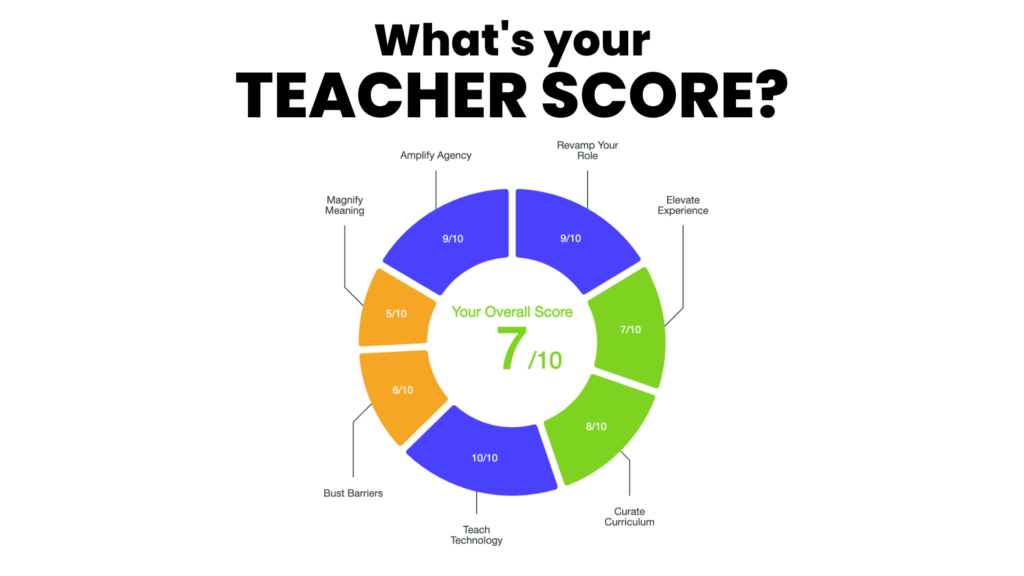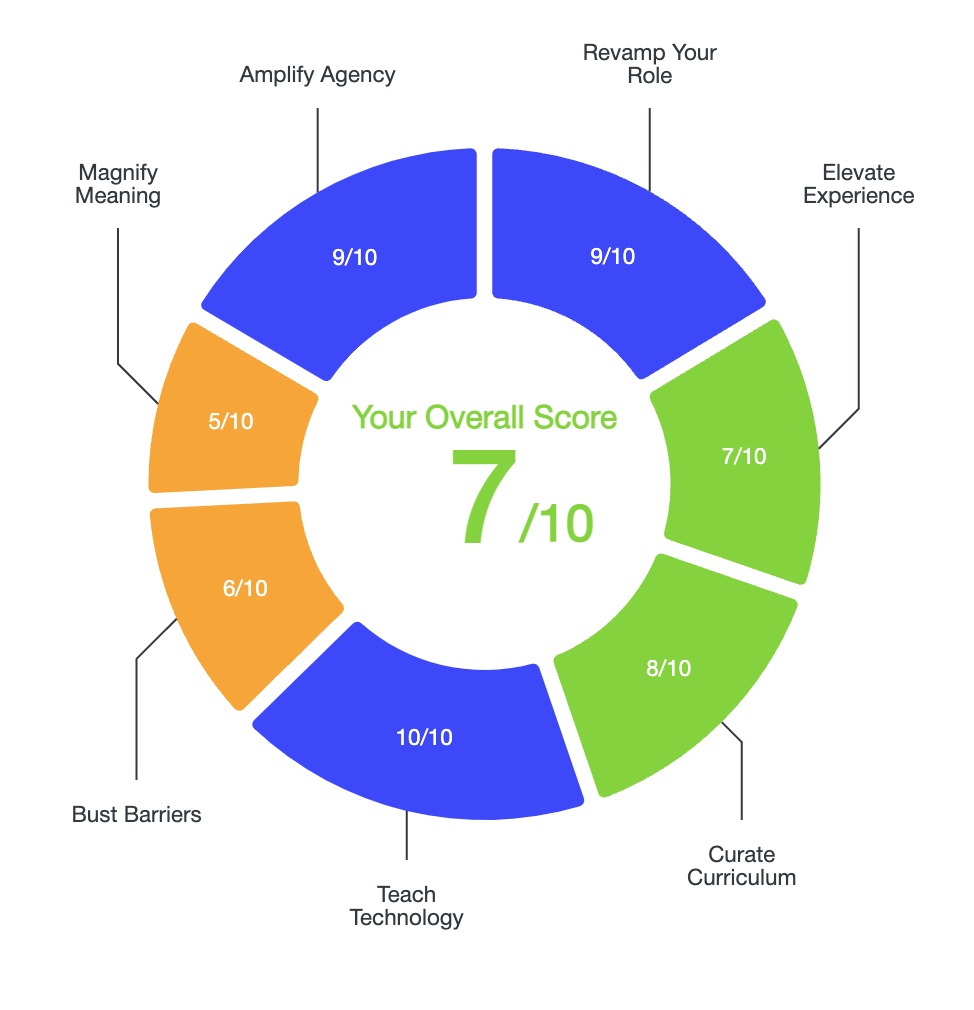The 21st Century Teacher Scorecard is the ideal tool for any teacher looking to design highly engaging lessons using technology. Only through empowering yourself with the necessary skills and knowledge can you in turn empower your students.
The Scorecard assesses your specific areas of strength and growth in effective technology integration, and can serve as the basis for developing your personalized learning plan. It gives you clear picture of your current areas of strength and growth in all facets of effective lesson design, because meaningfully teaching with technology is about so much more than just using technology.
7 Core 21st Century Teacher Competencies
The 21st Century Teacher Scorecard is based on a framework we’ve developed in order to help you learn the skills and knowledge necessary to meet the needs of today’s students through implementing Universal Design for Learning (UDL).
That’s because UDL offers a vision for what it looks like to design meaningful, relevant, authentic lesson design that reach as many learners as possible. Our experience helping thousands of educators design these kinds of lessons has led us to identify 7 Core Competencies all aspiring 21st Century Teachers need to develop.
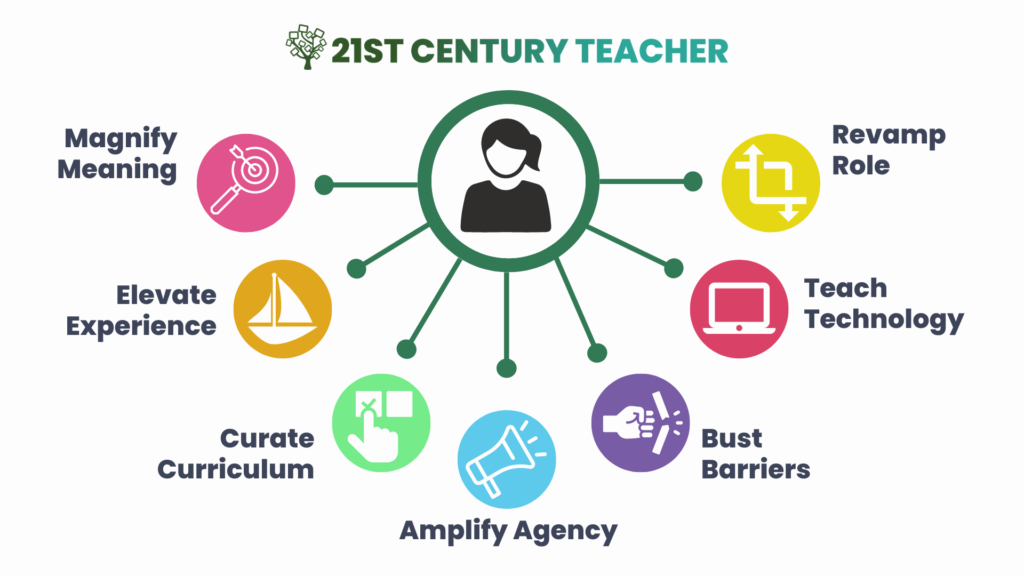
Upon completing the scorecard, you’ll receive an individual report with an overall score and separate scores in each of the 7 Core Competencies. The purpose isn’t to compare yourself with others, nor is it to get a perfect score in each category. Instead, completing the scorecard helps draw your awareness to different high-impact instructional strategies you could try. It also helps you understand what you are already doing well so that you can build upon your strengths.
Knowing your specific areas of strength and growth will help you make an intentional, strategic decision about where to go next.
Below we’ve included brief explanations of each skill and suggestions for how you can begin implementing the 7 Core 21st Century Teacher Competencies.
Magnify Meaning
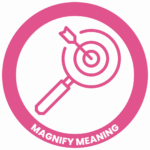
What does it mean to Magnify Meaning?
A 21st Century Teacher instills a deep love of learning through helping students understand why learning is important.
How can you learn to Magnify Meaning?
One of the most impactful ways to ensure students are engaged in meaningful learning experiences is through backwards plan using Essential Questions.
Essential Questions help teachers design purpose-driven lessons that elicit higher engagement and promote critical thinking. An essential question is one probes student thinking, encourages curiosity, and invites multiple pathways to a deep understanding of the content. When used effectively, essential questions can help create purposeful learning experiences for students and encourage them to grapple with complex ideas.
Elevate Experience
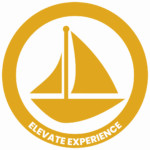
What does it mean to Elevate Experience?
A 21st Century Teacher casts aside passive, sit-and-listen style learning in favor of active, discovery-based, and project-based learning.
How can you learn to Elevate Experience?
Creating an active learning environment is a high-impact practice that you can learn how to implement almost immediately. Start by learning how to use technology to add interactivity to sections of your lessons that tend to be more passive. For example, tools like Nearpod and Pear Deck enable you to add interactive questions to your lectures. Edpuzzle enables you to add interactive questions to videos. And tools such as Kami and Actively Learn help you turn any text into an interactive learning experience.
Once you have built a culture where ongoing active participation is the norm, not the exception, you can begin to utilize hands-on projects where students create with technology as an alternative assessment. When done in concert with Magnifying Meaning, learning how to implement project-based learning can lead to deeply engrossing, highly engaging learning experiences for both students and teachers.
Curate Curriculum
What does it mean to Curate Curriculum?
A 21st Century Teacher incorporates a wide variety of up-to-date materials to help make learning more relevant as well as to provide students with multiple means of representing information.
How can you learn to Curate Curriculum?
When considering how to strategically supplement your curriculum, you’ll want to consider the type and purpose of the resources you are using in your classroom.
In terms of resource types, consider how you can create more ways for students to access new information by offering a wide range of media types. If, for example, your resources are primarily text and video-based, consider intentionally incorporating audio, image, and even virtual reality-based resources.
When it comes to the purpose of your resources, consider how you can expose students to resources other than ones that present key ideas. What kinds of high-interest resources might you use? How can you help students understand a new concept through experiential resources such as virtual reality and 360 degree images? How might you incorporate resources that help students make connections between what they are learning and the real world? Between what they are learning and other subjects?
Amplify Agency
What does it mean to Amplify Agency?
A 21st Century Teacher empowers students to take ownership of their learning through voice and choice.
How can you learn to Amplify Agency?
One of the most impactful ways you can Amplify Agency in your classroom is by learning how to implement student-led conferences.
Student-led conferences entail students taking the lead by sharing their goals, progress, and work samples instead of a traditional conference format where the adults do the majority of the talking. Preparation is the key ingredient to a successful student-led conference. As the teacher, you’ll need to learn how to engage students in effective goal-setting, progress monitoring, work curation, and reflection.
Bust Barriers
What does it mean to Bust Barriers?
A 21st Century Teacher knows how to leverage the power of technology to proactively eliminate the obstacles that often stand in the way of learning.
How can you learn to Bust Barriers?
One of the most powerful ways to use technology when designing lessons is to help ensure that what you are teaching is as accessible as possible for as many students as possible. It’s important to note that this isn’t the same as differentiating instruction. Whereas differentiation calls upon teachers to create additional lesson materials to based on a core lesson, universal design asks you to build accessibility features directly into your lessons the first time around.
In order to do this successfully, you’ll need to learn how to anticipate barriers to learning before they arise. A simple, yet highly impactful strategy you can learn is how to teach every one of your students about the different accessibility tools that are available to them. Chromebooks, for example, have a wide array of built-in accessibility features. Microsoft apps also includes many highly functional accessibility features. And commonly used programs like Google Docs and Google Slides also have numerous underutilized features to help increase access, ranging from voice typing to pre-created templates.
Teach Technology
What does it mean to Teach Technology?
A 21st Century Teacher learns how to choose and use the right technology tools for their classroom AND creates opportunities for students to learn how to use technology.
How can you learn to Teach Technology?
To effectively Teach Technology, you must first learn how to strategically choose and use technology tools on your own. In order to do this, you’ll need to start taking a “task-based approach” to choose apps rather than a “tools-based approach.”
Although tasks will differ depending on an individual classroom’s needs, you can look to the 7 Core 21st Century Teacher Competencies as a guide when determining whether or not you have the right tools for the right tasks.
For example to Amplify Agency, you’ll need a tool that supports self-assessment and reflection.
To Bust Barriers, you might want tools that aid comprehension of text and video.
And to Elevate Experience, you’ll want to find apps that help students apply their understanding authentically, such as through podcasting, graphic design, or video creation.
Revamp Your Role
What does it mean to Revamp Your Role?
A 21st Century Teacher is a facilitator of learning who cedes the spotlight, takes risks, and commits to lifelong learning.
How can you learn to Revamp Your Role?
To Revamp Your Role and shift from a teacher-centric classroom to a learner-centric classroom, one of the most concrete skills you can learn is how to flip your classroom
Although flipping your classroom originally entailed students watching video lessons for homework, we advocate for an “in-classroom flip” where everything takes place during class time. Shifting your lessons from live lectures to videos, or using video lessons other have created, has several benefits for both students and teachers.
Flipped instruction offers any time, any place instruction, doesn’t require an entire class of students to pay attention to one adult in the room, and frees up your time work with small groups or individuals, amongst many other benefits.
What's Your Teacher Score?
Want to see how your 21st Century Teacher skills stack up? Take our free Scorecard Quiz and find out which 21st century teaching skills are you excelling in and which ones have room for improvement.

